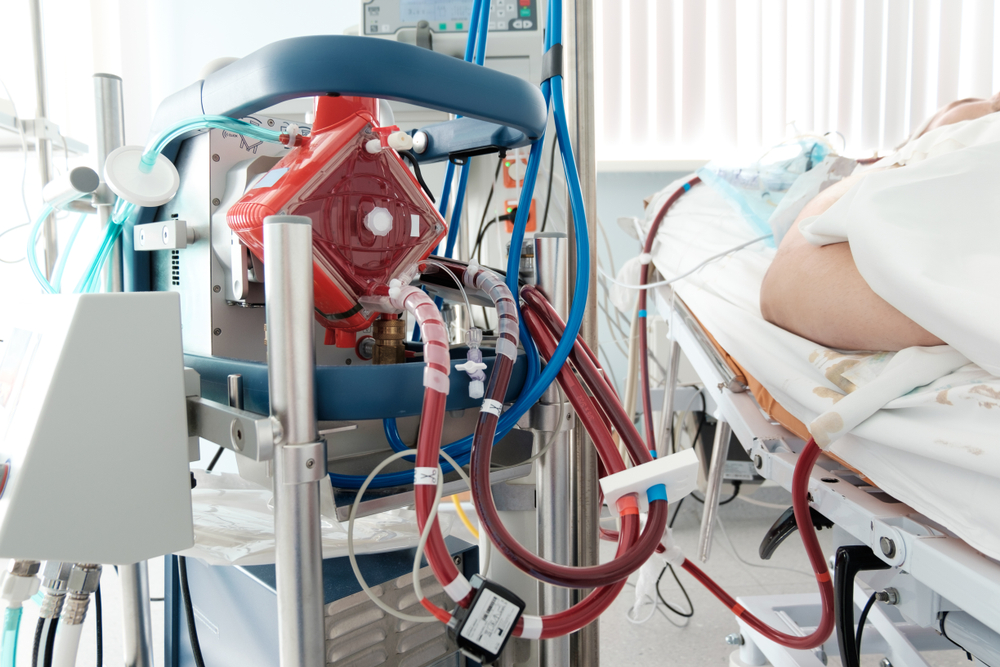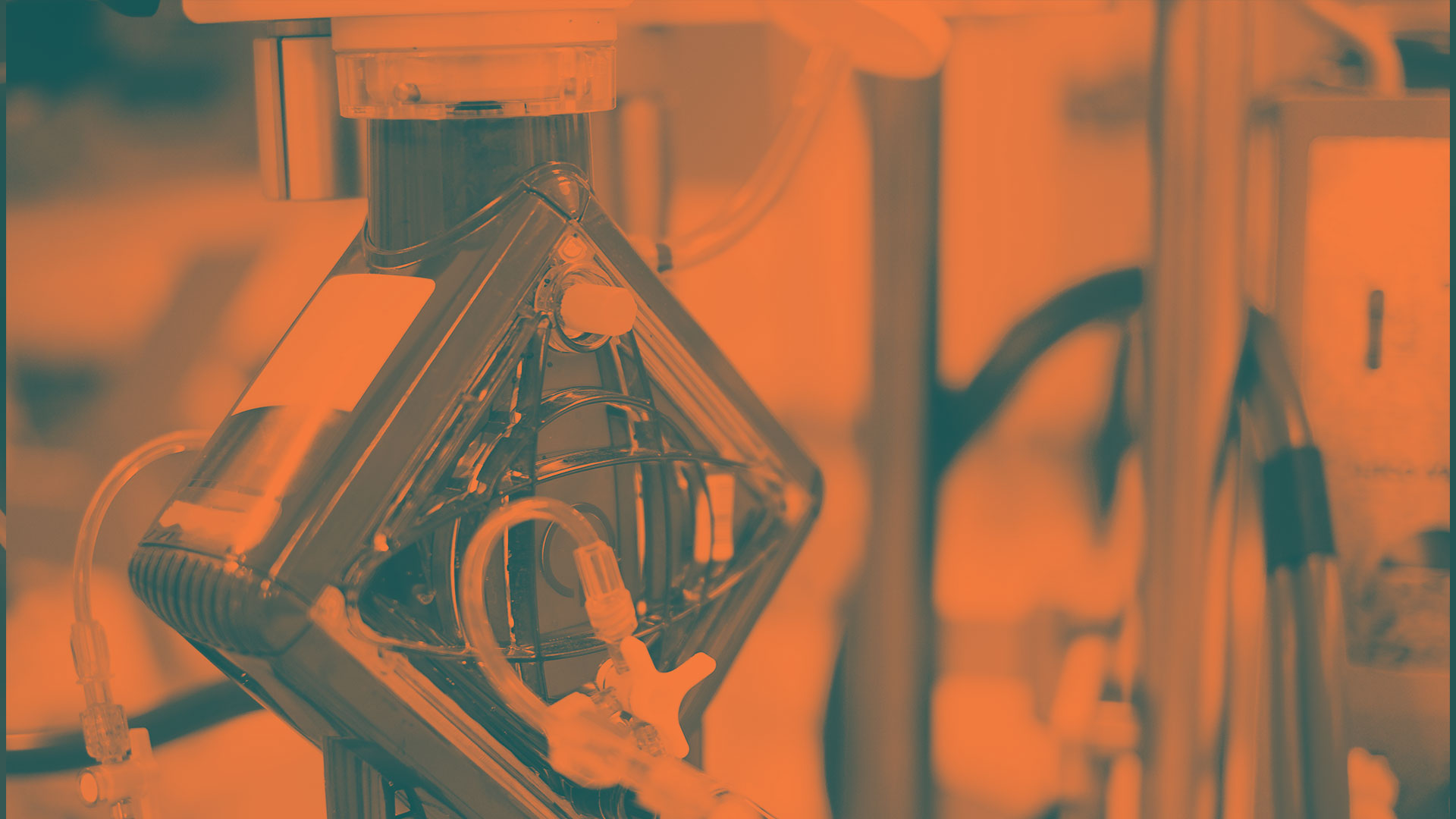
For those of you that aren’t yet familiar with ECMO, you’re in the right place. While the human race continues to brainstorm and research new versions of life support, the ECMO field is expanding rapidly by moving beyond the treatment of just babies and children. The growth in its use in adult cases has increased dramatically. In fact, between 2006-2011, there was a 433% increase in adult ECMO cases. Before we talk about the growth of ECMO, let’s first take a look at what ECMO actually is and how it helps patients with severe illness/injury.
ECMO stands for Extracorporeal Membrane Oxygenation. It’s a procedure that allows a mechanical pump to perform blood oxygenation and cardiac function from outside the body. It removes blood from the patient and pumps it through a membrane oxygenator. The oxygenator partially acts as the lungs by exchanging carbon dioxide, and the pump partially acts as the heart. Then the blood is pumped through a heat exchanger to be warmed and then returned to the patient. The pump supports cardiac function by creating pressure and flow that helps circulate the blood in the body. In other words, ECMO works as a substitute for the heart and lungs so that they can allow doctors to repair injuries, or allow the organs to rest for upcoming procedures. It is now an essential part of many severe cardiac and pulmonary cases.
The Expanding Field
ECMO is a procedure that previously was used on babies only, but it is now being used on a larger number of adults, leading to ECMO centers emerging all over the world. According to the latest registry report from the Extracorporeal Life Support Organization (ELSO), which has kept a close watch on the ECMO field since 1990, over 21,000 combined adult ECMO cases have been reported internationally with successful outcomes. And as of 2018, there were 391 centers all across the globe versus 150 centers ten years ago in 2008. However, it is to note that ECMO is still used on infants and children more than adults, with over 27,000 successful neonatal cases reported internationally, as well as 13,411 successful pediatric cases (according to ELSO).
When is ECMO used?
ECMO can be used for a variety of conditions, but it all depends on the age of the patient.
- For newborns: Pneumonia, PPHN, MAS (Meconium aspiration syndrome)congenital heart disease, congenital diaphragmatic hernia, neonatal meconium aspiration syndrome, and PPHN (severe high blood pressure in the lung arteries).
- For older children: Pneumonia, sepsis, poisoning, severe asthma, and post-op cardiac repair.
- For adults: Pneumonia, heart failure, cardiac arrest, respiratory failure, viral cardiomyopathy, arrhythmias, air leaks, and heart transplants.
LEARN MORE ABOUT OUR ECMO SERVICES AND CAREER OPPORTUNITIES



Comments are closed.